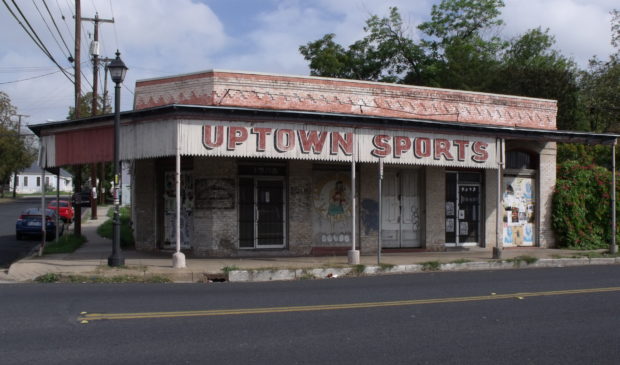City offers info sessions for next round of historic preservation grants
Tuesday, March 10, 2020 by
Chad Swiatecki The city has opened the application process for the latest round of grants to aid in the preservation of historic structures that can promote cultural tourism throughout Austin.
With a May 1 deadline looming, the Heritage Tourism Division has scheduled the first in a series of information sessions to take place at the City Hall Boards and Commissions Room Wednesday, 5:30-8:30 p.m. (Update: The Heritage Grant Information Session scheduled for 4 p.m., Wednesday, March 11 at City Hall has been postponed to 10:30 a.m., March 25, at 5202 E Ben White, Suite 400. Applicants who previously registered for the March 11 session will be automatically added to the March 25 attendee roster.)
There will be three other sessions ahead of the deadline to give property owners, potential investors and other interested parties a chance to learn about the application process and selection criteria. The grants have a $250,000 cap and are split into capital projects centered around restoration and preservation, or tourism projects that involve education and marketing efforts.
This year’s application process continues the expanded criteria for the program, which is funded by Hotel Occupancy Tax revenue but for years wasn’t able to find enough eligible structures because of restrictions in what kinds of improvements and organizations could qualify, and a lower cap on awards.
Lindsey Derrington, executive director of Preservation Austin, said the expanded program has created enthusiasm and opportunities for property owners who previously had limited options to obtain money for expensive historic preservation projects.
“The city is using HOT funds in ways that benefit tourists and locals, and making sure those funds get back out into the community in a way that benefits projects that will all be publicly accessible,” she said. “The previous grant criteria were really narrow, which is why they were having trouble giving away the money. All we ever talked about was how it wasn’t really working, and our nonprofit did a lot of advocacy to help the program get to where it is.”
Derrington said the city grants can pair with smaller $5,000 grants her organization offers to homeowners and nonprofits, with state and federal historic preservation programs often coming into play as well.
With growth throughout the city placing development pressure on property owners, Derrington said the city’s heritage grant program is an important tool to prevent valuable structures and cultural attractions from falling into disrepair. As an example, she noted the concentration of historic homes and other buildings in East Austin along 12th Street that she hopes will be restored and preserved in the coming years.
“With the development pressure, for us it shouldn’t be an either-or scenario,” she said. “The city should be able to grow and change, but there needs to be a balance when historic resources come into play, and there are a lot of solutions that with good planning practices can ensure that a new neighborhood doesn’t just wipe out everything that was there before.”
James Moody, a partner in the forthcoming restoration of the Uptown Sports Club property in East Austin, said the city’s grant dollars were a crucial piece of the puzzle to make the reopening of that property financially viable.
“We knew it before, but have learned even more as we’ve gone into it, that it’s very expensive to preserve a building versus tearing it down or adding onto it, so every dollar counts,” he said. “Without the city, federal and state grants and tax credits that we were able to receive, the project wouldn’t have been economically feasible. Flat out, you couldn’t do it and take care of your investors … or at least it wouldn’t be wise to do it.”
Moody said the building’s distinguishing characteristics, such as its historic wooden awning or corner door entry orientation wouldn’t be possible under current city zoning, making costly preservation a necessity.
“There’s a number of beautiful architectural elements that if you didn’t preserve them you probably couldn’t get them approved in a new build today. The wood awning on there could never be built new, so if you don’t preserve it it’s gone and legally could never come back, but if you preserve it you can keep it as is.”
Photo by Katie Labor made available through a Creative Commons license.
The Austin Monitor’s work is made possible by donations from the community. Though our reporting covers donors from time to time, we are careful to keep business and editorial efforts separate while maintaining transparency. A complete list of donors is available here, and our code of ethics is explained here.
You're a community leader
And we’re honored you look to us for serious, in-depth news. You know a strong community needs local and dedicated watchdog reporting. We’re here for you and that won’t change. Now will you take the powerful next step and support our nonprofit news organization?









